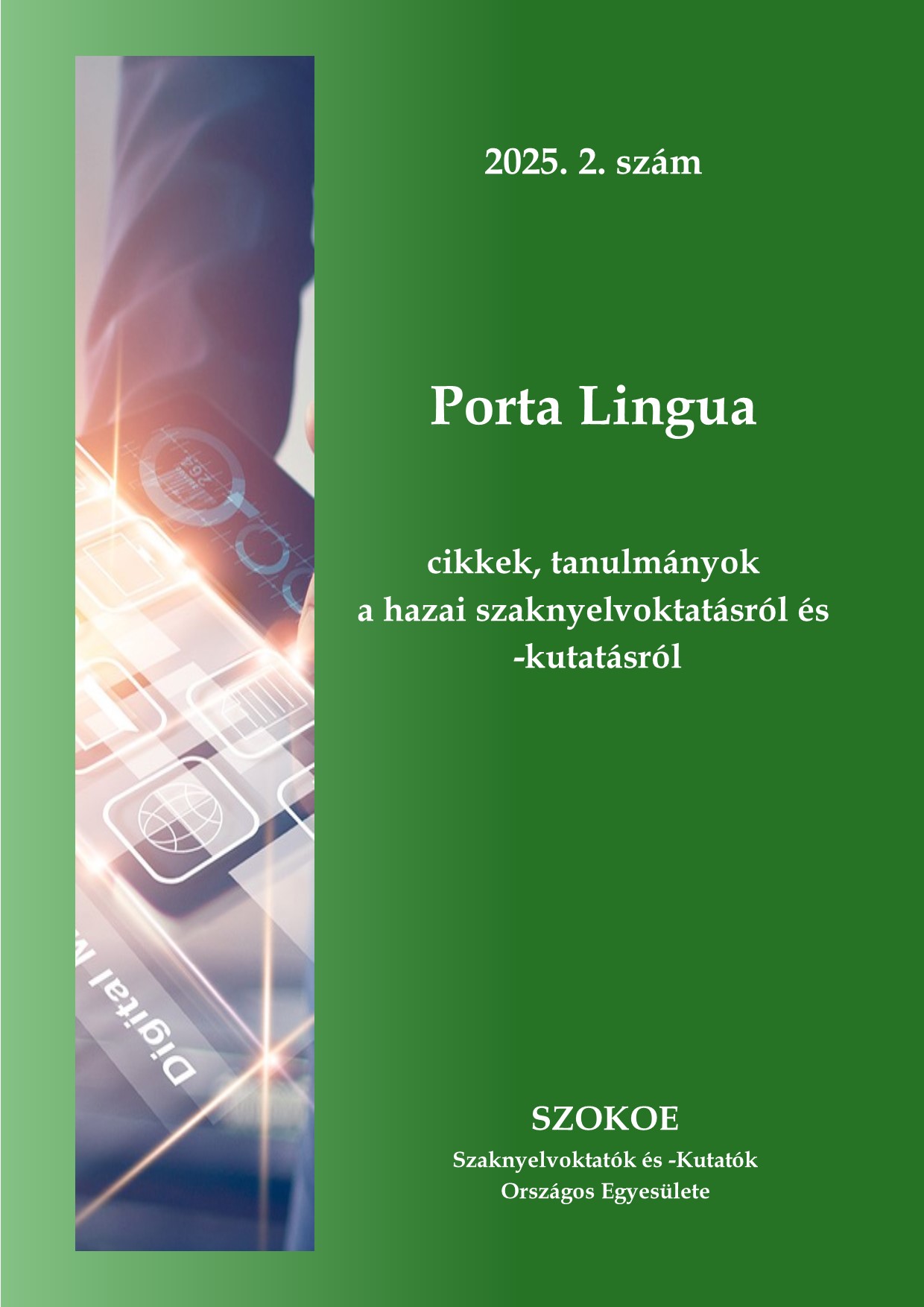Time management at beginner level: contrastive approach and positive transfer in teaching German business language
Abstract
The theoretical part of the study reviews the development of contrastive linguistics, emphasising its role in language teaching. In the 1950s and 1960s, contrastive linguistics focused on a detailed comparison of the mother tongue and the first foreign language, but its importance declined and was replaced by audiolingual and audiovisual methods. The pragmatic turn of the 1970s brought a communicative approach to the fore. From the 1990s onwards, the intercultural method gave new opportunities for explicit linguistic comparison. The aim of this paper is to show the impact of positive transfers based on English language skills on the learning of German, in particular through the example of the course "German Business Language 1". Taking into account that the number of lessons of a business language course is not sufficient to cover the given units of a course book at the appropriate pace and scope, the comparative method offers the possibility to combine grammatical explanations occurring in certain units. In this paper, the explanations of the first part of the coursebook "DaF im Unternehmen" are presented in a way that makes specific sections more transparent and illustrative for learners with a background in English, by considering parallels and contrasts.
References
Balázs, J. (1971): Az egybevető (kontrasztív) módszer alkalmazásának lehetőségei a külföldi magyaroktatásban. Hungarológiai ismerettár 1. (Válogatás a magyar lektori konferenciák előadásaiból 1969–1986). Budapest.
Bárdos, J. (2005): A kommunikatív nyelvtanítási irány és a századvég. Iskolakultúra. 12/2. 60–72.
Budai, L. (2006): Lehet-e új életet lehelni a kontrasztív elemzésbe? Modern nyelvoktatás. 12/2. 4–15.
Byram, M. (1997). Teaching and Assessing Intercultural Communicative Competence. Multilingual Matters: Clevedon.
Coady, J. – Huckin, T. (1997): Second language vocabulary acquisition. Cambridge University Press: Cambridge. https://doi.org/10.1017/CBO9781139524643
Fodorné Balthazár, E. (2002): A kontrasztivitás szerepe a (német) gazdasági nyelv oktatásában. In: Majoros, P.(szerk.) Tudományos Évkönyv 2001. Budapesti Gazdasági Főiskola (BGF): Budapest. 282–290.
Fries, C. (1945): Teaching and learning English as a foreign language. University of Michigan Press: Michigan.
Gass, S. (1988): Second language vocabulary acquisition. ARAL 9. 92–106. https://doi.org/10.1017/S0267190500000829
Heltai, P. (1987): Motivation in English and Hungarian and its Effect on Vocabulary Learning. Annales Universitatis Scientiarium Budapestinensis, a linguistic journal of Eötvös Loránd University, Department of Modern Hungarian Linguistics. Sectio Linguistica XVIII. 211–247.
Heltai, P. (2016): Kontrasztív elemzés a mai nyelvtanításban és fordításoktatásban. Modern Nyelvoktatás, 22/1–2. 3–30.
Horváth, M.–Temesi, M. (szerk.) (1972): Összevető nyelvvizsgálat, nyelvoktatás. Tankönyvkiadó: Budapest.
Hufeisen, B. (2003): Kurze Einführung in die linguistische Basis. In: Hufeisen, B. – Neuner, G.(Hrsg.)(2003): Mehrsprachigkeitskonzept – Tertiärsprachen – Deutsch nach Englisch. Europäisches Fremdsprachenzentrum: Graz. 7–12.
Lado, R. (1957): Linguistics across cultures. Applied linguistics for language teachers. University of Michigan Press: Michigan.
Manno, G. (2009): Französisch nach Englisch: Überlegungen zur Tertiärsprachendidaktik. In: Metry. A. – Steiner, E. – Ritz. T. (Hrsg.)(2009): Fremdsprachenlernen in der Schule. Hep-Verlag: Bern. 129–144.
Ringbom, H. (2006): Cross-Linguistic Similarity in Foreign Language Learning. Multilingual Matters: Bristol. https://doi.org/10.21832/9781853599361
Roininen, H. (2012): Transfer beim Fremdsprachenlernen. Zum positiven und negativen Lexiktransfer beim DaF-Lernen. Fallstudie Deutsch als Tertiärsprache nach Englisch. Universität Tampere. Institut für Sprach-, Translations- und Literaturwissenschaften: Tampere.
Rózsavölgyi, E. (2017): A magyar és az olasz téri nyelv grammatikája a magyar mint idegen nyelv szemszögéből. Lingua Franca Csoport: Budapest.
Sander, I. et al. (2015): Deutsch als Fremdsprache im Unternehmen A1. Ernst Klett Verlag: Stuttgart.
Schmitt, N. – McCarthy, M. (1998): Vocabulary. Description, acquisition and pedagogy. Cambridge University Press: Cambridge.



